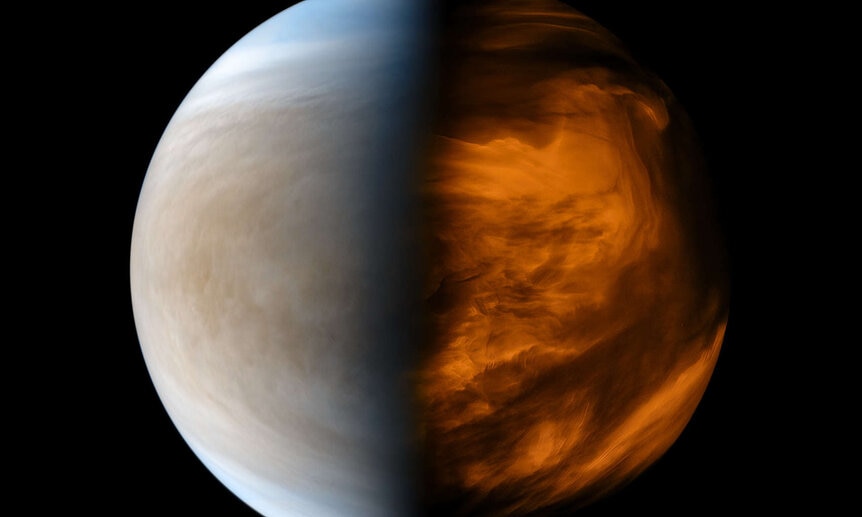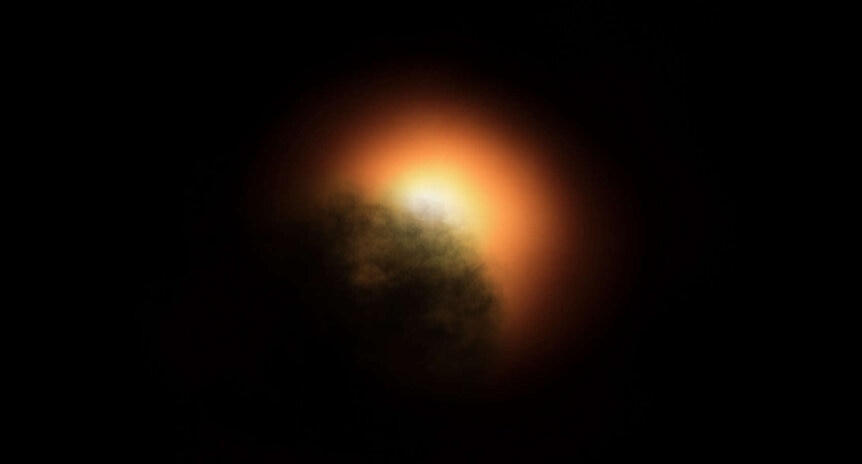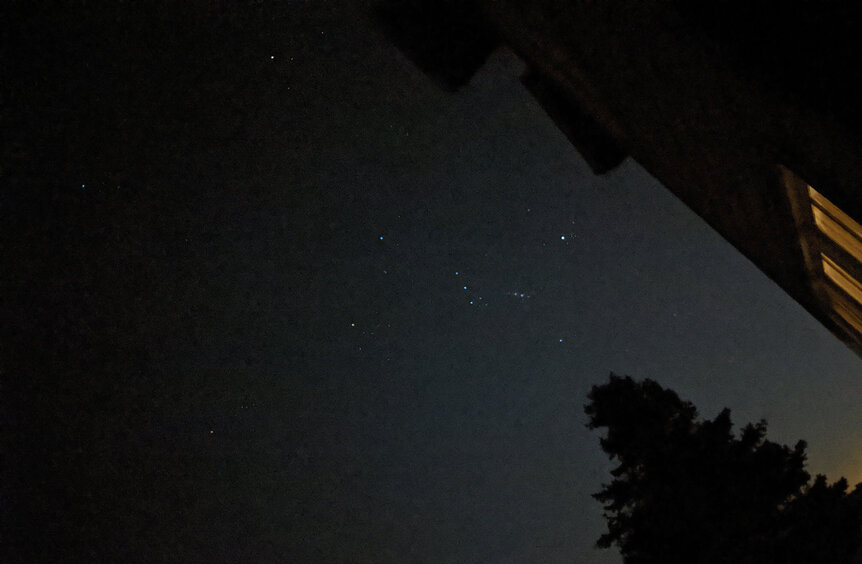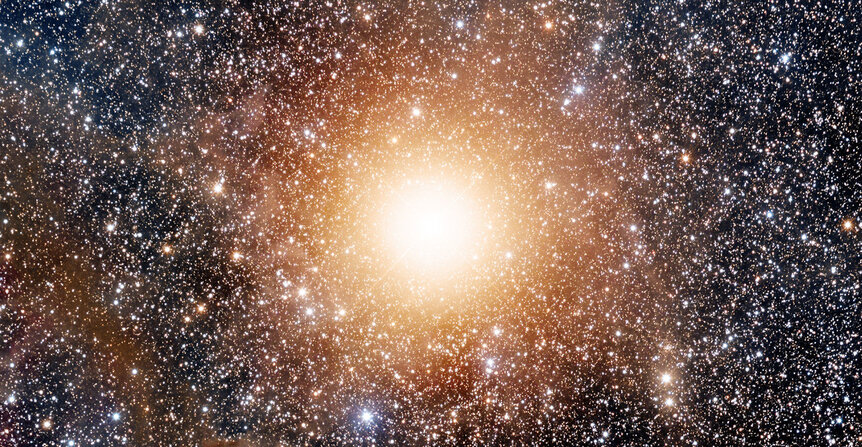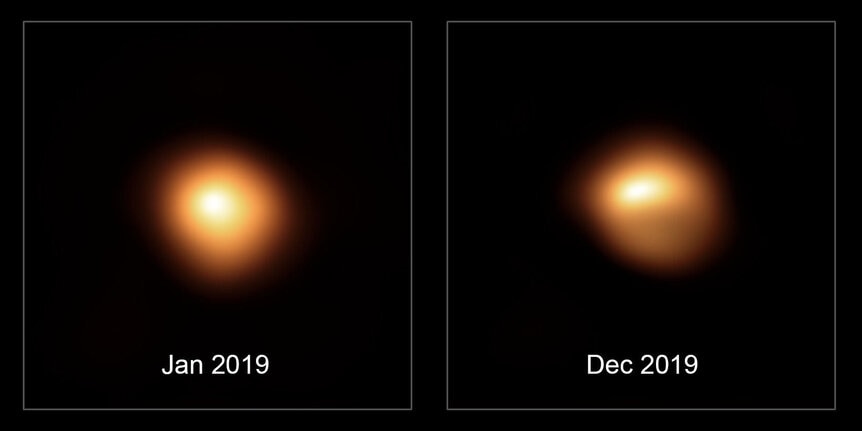Create a free profile to get unlimited access to exclusive videos, sweepstakes, and more!
UPDATES: Phosphineless Venus and dustless Betelgeuse?
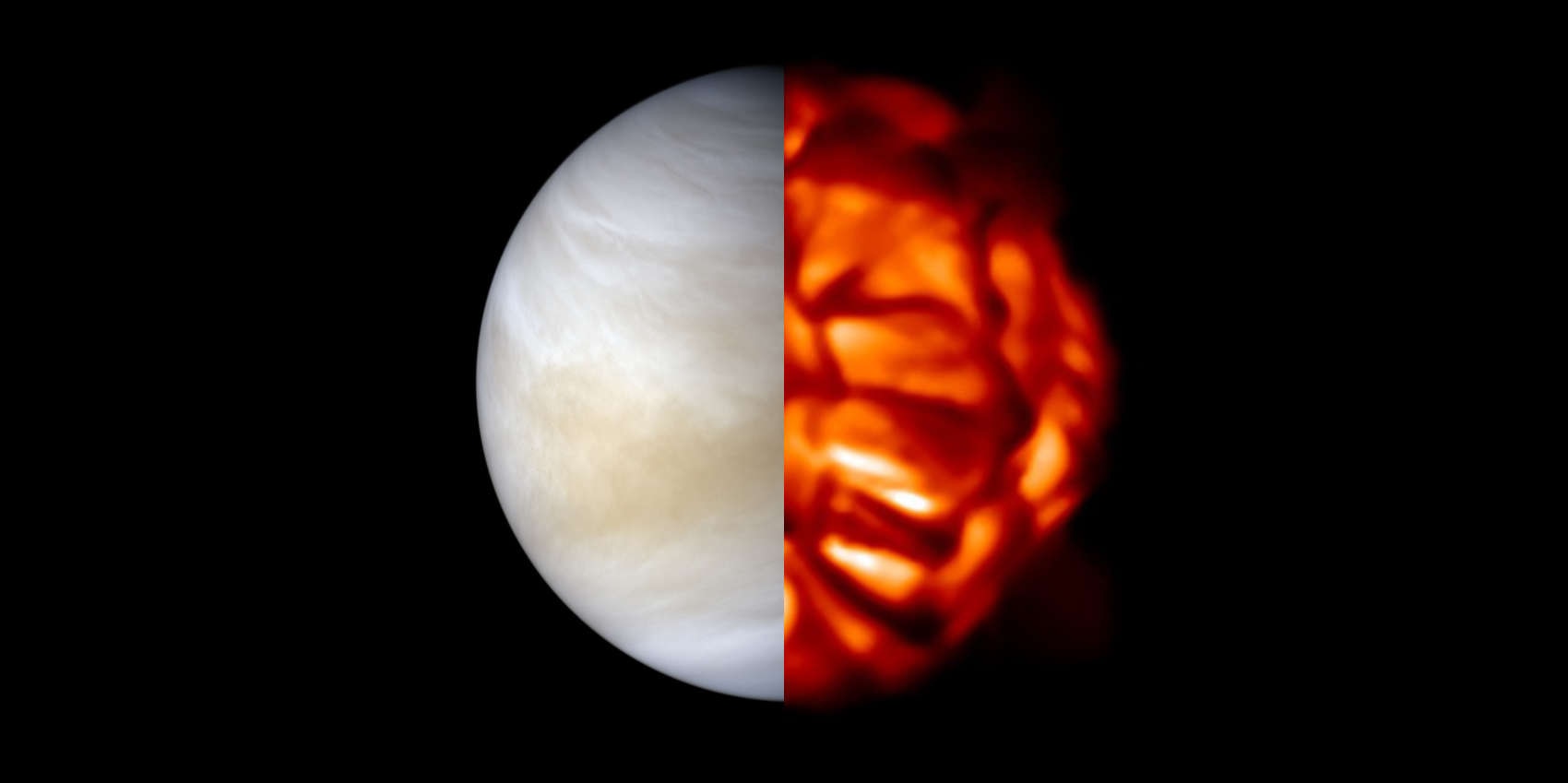
I have a couple of updates on some news stories I've been following for quite some time, both of which caused quite a stir when first announced: Phosphine in the atmosphere of Venus, and dust causing the dimming of Betelgeuse in late 2019/early 2020.
The <tl;dr> versions of both are: Venusian phosphine may have actually been sulfur dioxide, and Betelgeuse dimming may have been from it getting cooler.
You may recall that back in September 2020 a team of astronomers announced they may have found evidence of the molecule phosphine in the atmosphere of Venus. Normally that would be a pretty esoteric discovery, but the thing is you wouldn't expect to find that particular molecule there, since it gets destroyed pretty easily in the hellish environment of Venus… and, on Earth, phosphine is made primarily by anaerobic bacteria as they dine on dead things that used to be alive.
So yeah, kind of a big deal. But then doubt was cast on that, with other scientists saying that the data used weren't calibrated using the right files, which could make it look like phosphine was seen when it's not actually there. There were some other issues as well.
The original team then responded, saying that the detection persisted when they used updated calibration files, though it was weaker. But then things got interesting.
The astronomers who made the original discovery looked at a spectrum, breaking the light from Venus up into individual colors. Different molecules absorb light at different specific colors, allowing them to be IDed. However, sometimes molecules absorb very similar if not overlapping colors, confusing the issue. A new paper has come out making this very point, saying that sulfur dioxide (SO2) has been mistaken for phosphine, since it absorbs light at the same wavelength as phosphine.
It's an interesting argument. Sulfur dioxide is known to exist in the Venusian atmosphere, and they argue (using models of the planet's atmosphere) that the signature seen in the data could be explained by SO2 existing in a layer about 80 km above the surface of Venus. Phosphine was claimed to be seen about 50 km up, but the new paper argues phosphine would be rapidly destroyed there.
The argument is compelling, and could very well be correct. Phosphine may not be what was seen in the first place. The problem here is these data were on the edge of what could be seen, so without getting further, deeper observations the issue may not get resolved. I expect we'll be hearing more from the original team about this soon, too.
Moving from a planet 40 million kilometers away to a bloated star 640 (or possibly 530) light years away, let's talk Betelgeuse.
The iconic star shocked everyone in late 2019 when its brightness plummeted like a stone, dimming by about 50%. It was easily noticeable by eye, and fairly freaky how rapidly it dimmed.
Betelgeuse is a known variable star, with its brightness varying by several percent on a couple of different cycles. But this deep plunge was unprecedented, and weird. Astronomers immediately started coming up with ideas to explain it. One was giant starspots, which turned out not to be very likely. Another was that perhaps its temperature dropped. A third, and the one I felt was most likely due to support from different sources, is that it belched out a huge cloud of dust that blocked some of its light.
But a new paper has just been published which brings temperature up again. Or down, I suppose: They show that part of Betelgeuse's upper atmosphere could have cooled quite a bit, explaining the drop in light.
Stars emit light because they're hot. If they cool down, they get fainter. However, Betelgeuse is a red supergiant, an enormous bag of gas more massive and far, far larger than the Sun. The physics of its outer layers is very complex, and not terribly well understood.
The upper parts of the star physically expand and contract over a period of months to years, making the star brighter and dimmer, changing its color slightly as well as the temperature. In the new work, the authors show that parts of Betelgeuse's upper atmosphere may have cooled by several hundred degrees, explaining the dimming.
They looked at the molecule titanium oxide (TiO), which is commonly seen in very cool stars. It absorbs light at very specific colors in a characteristic way, and what they found is that the absorption by TiO changed when Betelgeuse was dimmer, indicating it was cooler than previously thought. The exact temperature drop is hard to determine, but at one point they show a clear drop of 150 Kelvins (one degree Celsius = 1 Kelvin). They claim that if the temperature dropped by 250 K then no dust is needed at all to explain the dimming.
Complicating this is that extremely high-resolution images of the star show that only the southern hemisphere faded, so it's likely (they reason) the temperature drop happened there. If the temperature only dropped in one part of the atmosphere it would be hard to find out how much, because the northern hemisphere stayed the same, confusing the measurement. So a 250K drop isn't necessarily unreasonable.
It makes me wonder if more than one cause is behind the dimming then, both dust and a temperature drop. That's not out of the question; when something extreme happens in the Universe it's commonly because two or more phenomena ganged up to increase their effect. I'm speculating here, but I certainly wouldn't rule that out.
Funny: Venus is the brightest planet in our sky and the one that gets closest to Earth, and Betelgeuse is one of the brightest stars in the sky and also relatively close as stars go. Yet for both, mysteries abound.
There's a lot we know and understand well about the cosmos we live in, but there's also a whole lot we don't, even about our next-door neighbors. And these back-and-forth arguments by scientists about data and cause and physics are normal for science; when we push the boundaries of knowledge it takes time to figure out what we're seeing. I expect both of these mysteries will be solved to everyone's satisfaction, and then we'll move on to the next weird thing Venus and Betelgeuse will do. That's the way the Universe works.
